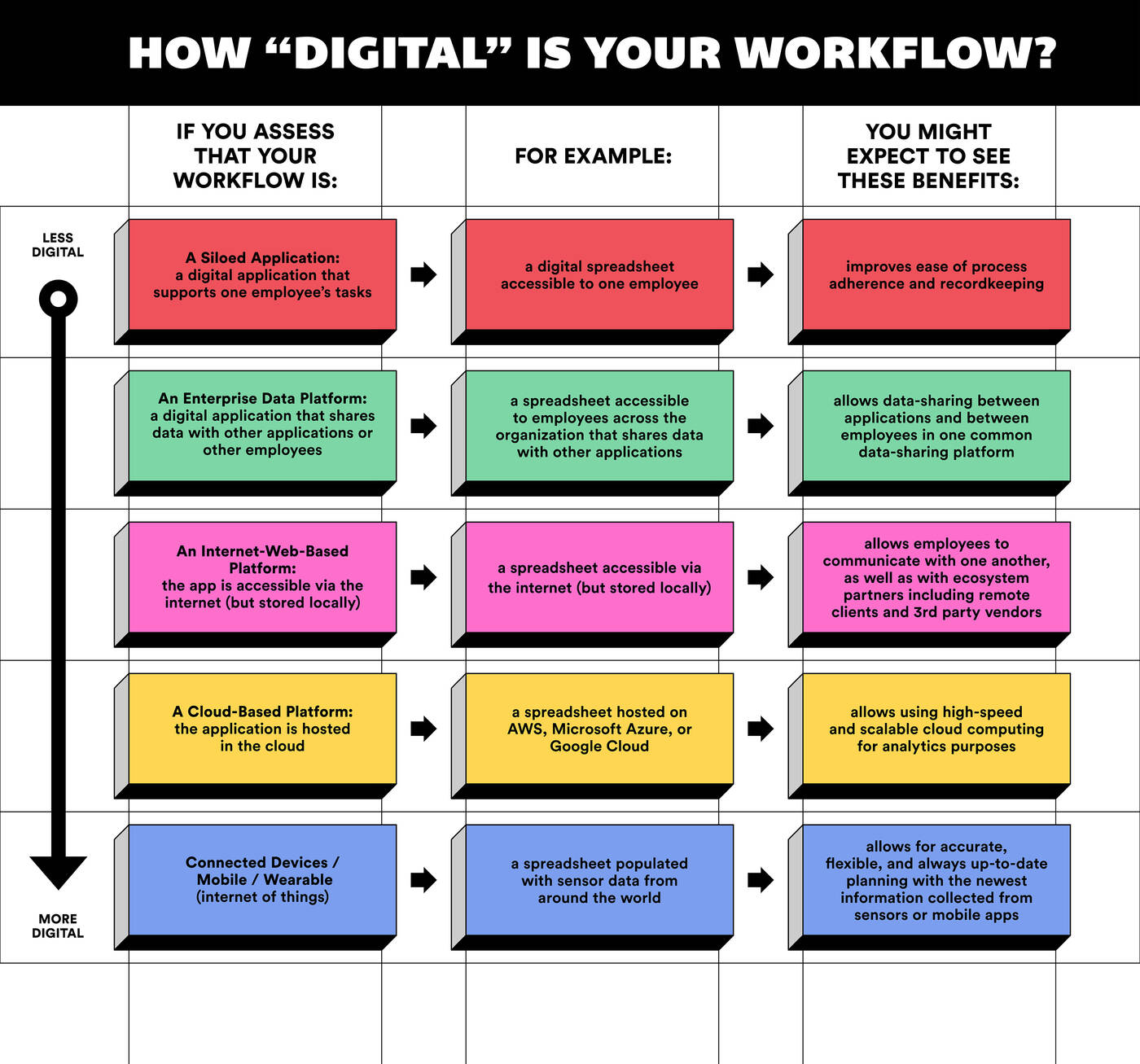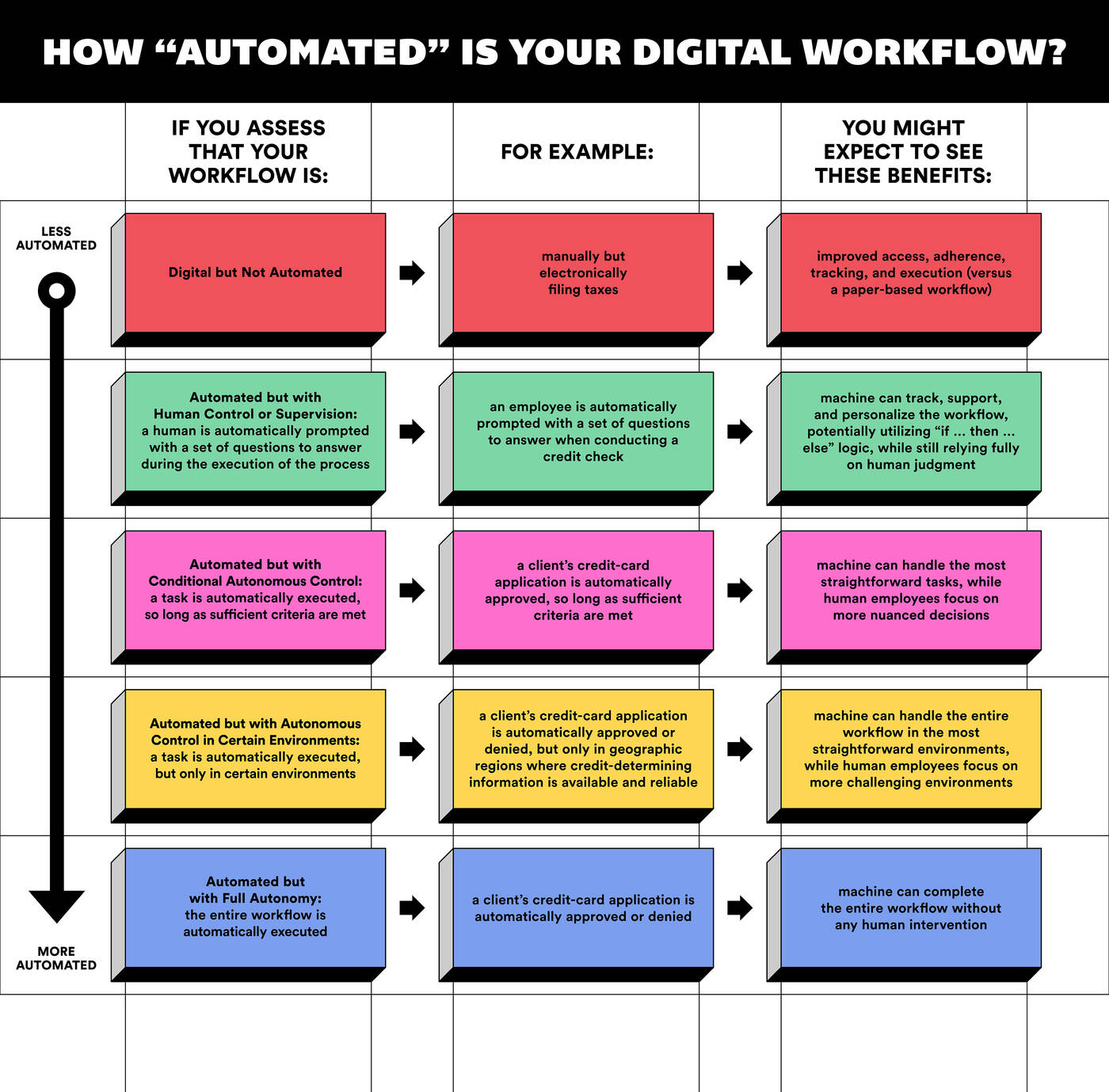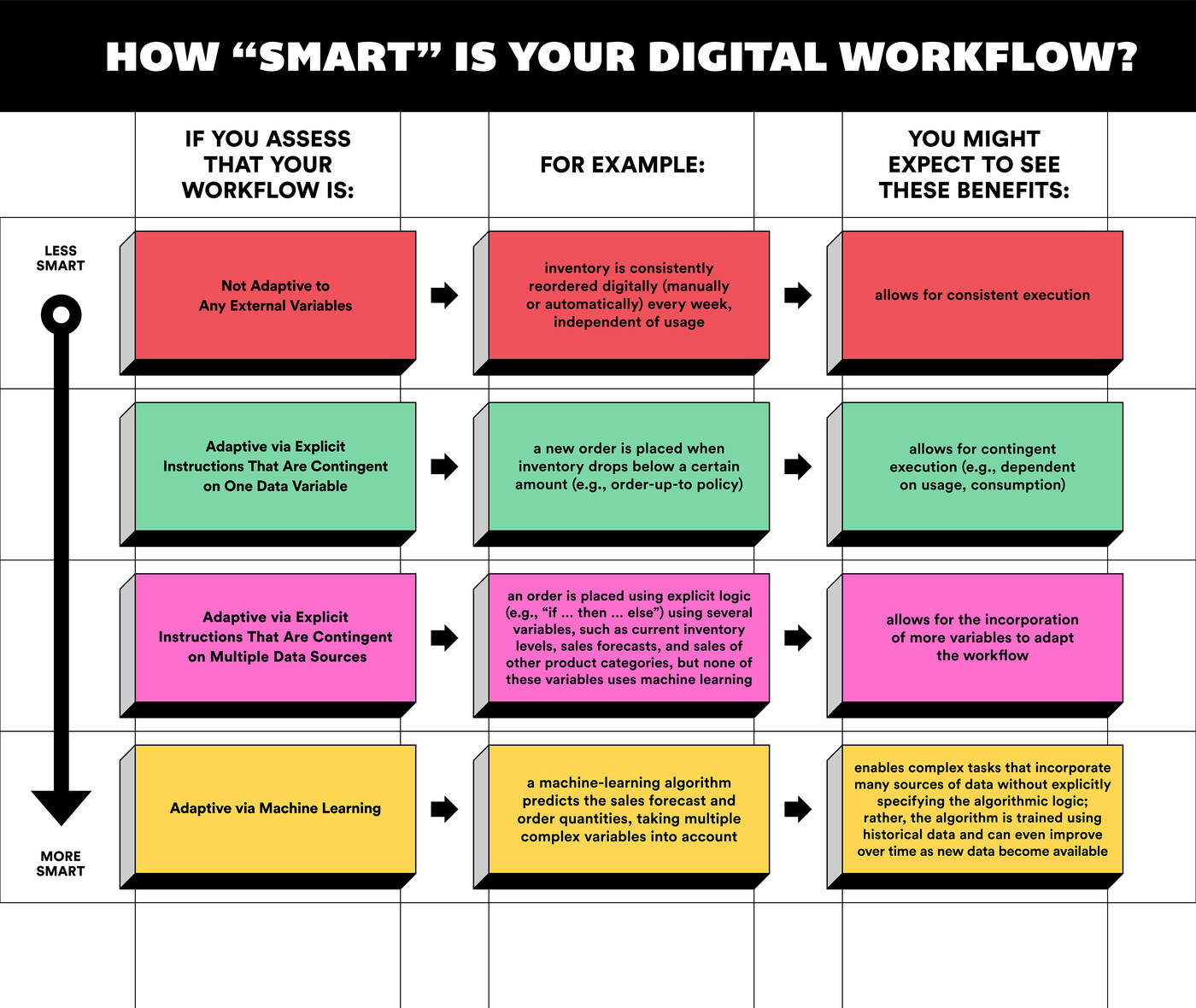Featured Faculty
A. C. Buehler Professor; Professor of Operations; Deputy Dean
Visiting Professor of Operations

Riley Mann
Many companies are working to digitize certain parts of their operations—as a way to automate some manual tasks, but also as a way to help their employees work smarter.
So where does your company fall along the digitization continuum?
There’s no single answer, according to Jan Van Mieghem, a professor of operations at Kellogg, and Robert Boute, a professor of operations management at Vlerick Business School in Belgium and a visiting professor at Kellogg. That’s because digitization has multiple dimensions and can differ from one business process to the next. For instance, a process can be digital but not automated, and automated but not smart—that is, dynamically adaptive.
So Boute and Van Mieghem recently developed a framework that companies can use to audit where their digitization efforts currently fall. Then, by weighing the incremental costs of moving to the next level of digitization against the benefits, companies can strategize their next move. As the researchers put it, “We hope that our diagnostic tool can inspire debate on how digitization may be put to best use in the future.”
Consider the range of businesses processes in your organization. Pick one business process, such as product assembly, inventory management, credit approval, or expense reimbursements, and consider the execution of its workflow. For that workflow, ask yourself the questions below. Then consider how that workflow might be further digitized and what benefits that effort would bring. The following charts show what this might look like.



Boute, Robert N. and Jan A. Van Meighem. 2021. Digital Operations: Autonomous Automation and the Smart Execution of Work. Management and Business Review, 1, 1, 177-186.